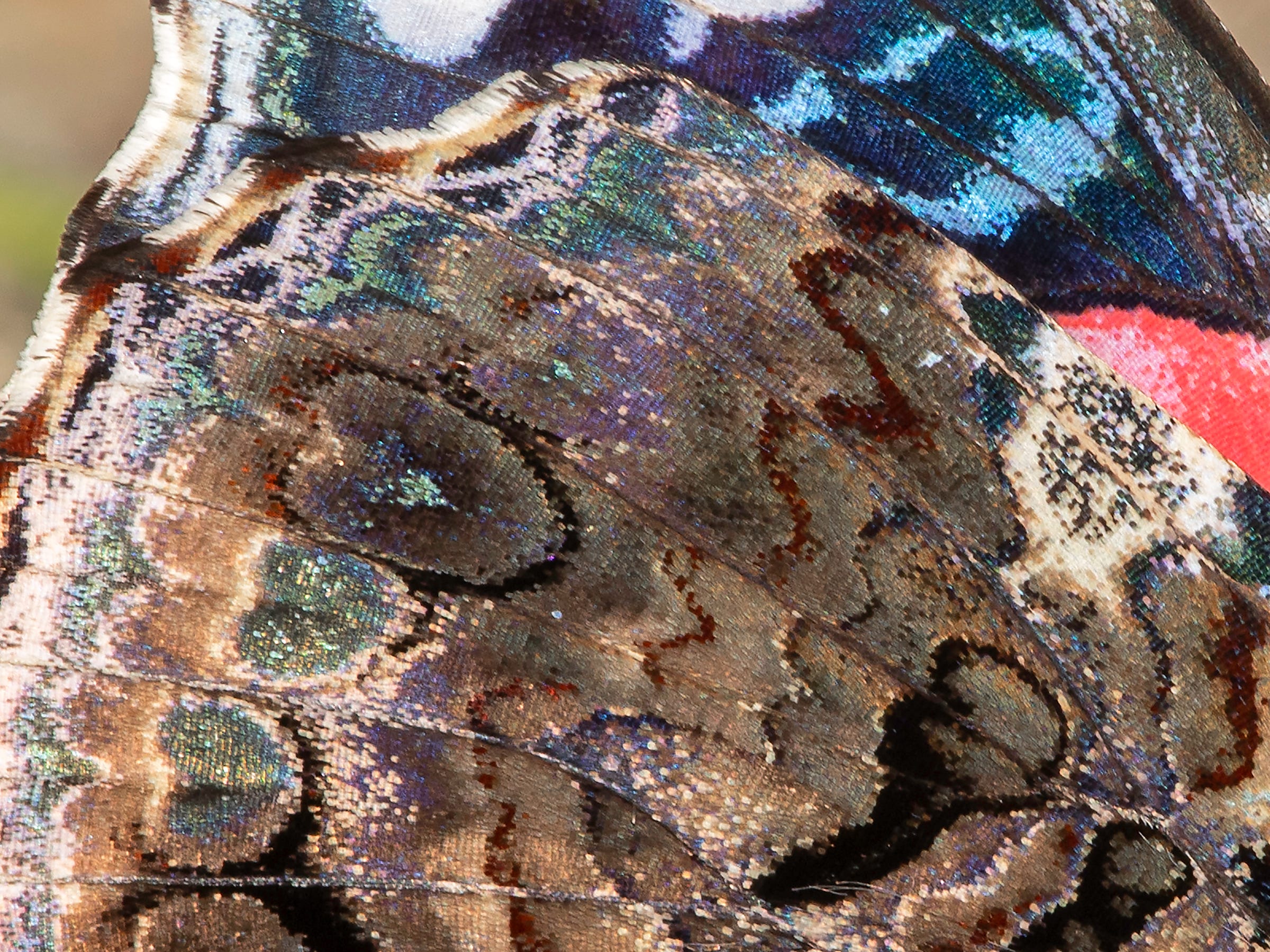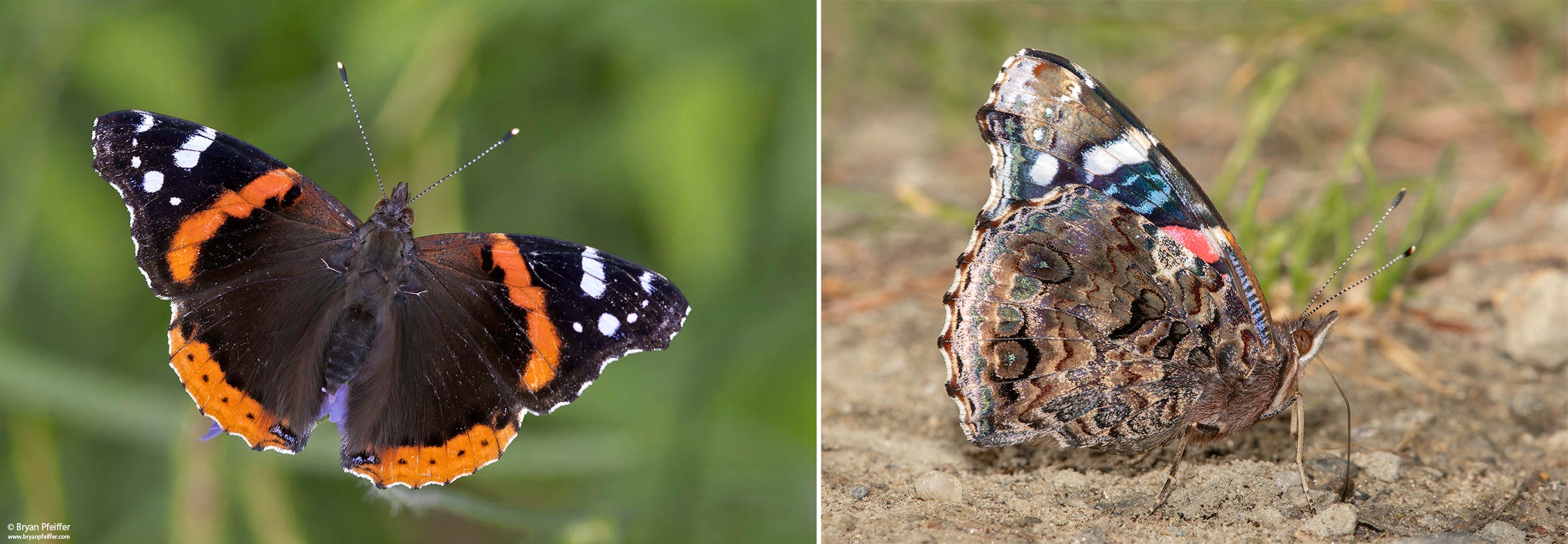The Butterfly of Doom and Light
Red Admirals on the Wing — from the Mideast to North America
A note to subscribers and a bonus butterfly follow this essay. Onward.
IN THE SPRING of 1881, shortly after Alexander II was assassinated in Saint Petersburg, a wave of Red Admiral butterflies spread across the Russian countryside. Bearing a wing marking vaguely resembling “1881,” the Red Admiral that year was called “the butterfly of doom.”
This spring, Red Admirals are turning up across Europe, the Mideast, and North America. They have come in a particularly huge wave to the eastern U.S. and adjacent Canada. The admirals are being flighty and evasive in Washington, D.C. They're sipping nectar from flowers in downtown Boston. And they're flashing crimson wing markings from Maine to Montreal to Minnesota.
My source about the butterflies of doom in Russia is Vladimir Nabokov, as skilled a lepidopterist as he was a writer. Nabokov occasionally wove Red Admirals into his narratives. In the novel Pale Fire, a Red Admiral alights on the sleeve of the poet John Shade moments before he is shot dead. And in his memoir Speak, Memory, Nabokov recalls seeing a young girl in a Paris garden, sometime before the Nazi invasion, promenading a “weakly fluttering, slightly crippled” Red Admiral tethered on a length of thread.
As an entomologist and writer, I do not suspect Nabokov harbored solely foreboding thoughts about Red Admirals. He did, however, dislike the moniker “admiral,” a degradation of the butterfly’s earlier English name: Red Admirable.
This red butterfly is indeed worthy of admiration.
First, Red Admirals (Vanessa atalanta) are migratory. They fly north each spring to reproduce, some years in huge numbers without warning. Here in Vermont, I’ve been encountering them nearly everywhere: remote bogs, downtowns, my backyard, as roadkill.
Careening in flight, Red Admirals display their crimson bands when they stop on flowers or alight on trees, buildings, or people. When they snap those wings closed above their body, the red all but vanishes: the admiral becomes cryptic, presumably safe from predators by resembling a dead leaf or the tree bark on which it alights.
But not entirely cryptic. A close and attentive tour of a Red Admiral’s underside reveals dazzling specks and splashes of iridescent teal, gold, rust, blue, lavender, and a zillion other hues. This light show is your reward for unhurried time spent in the company of a single butterfly — the kind of time most of us need more of anyway. (Finding the “1881” marking may require yet more time, even imagination.)

Now that they’re here, the Red Admirals have been mating in our midst (before dying off). Females lay their eggs on nettle leaves, where the hatched caterpillars eat and grow, form a chrysalis, and finally emerge as new generations of Red Admirals on the wing — your second chance to catch this wave. But not for long. Unlike most butterfly species, after their breeding season Red Admirals head south like snowbirds (and Monarchs), escaping winter temperatures that otherwise kill most adult butterflies.
Meanwhile, in Europe, as they did in 1881, the Red Admirals are flying in Moscow — and in Kyiv. Although they normally become scarce toward desert habitats farther east, Red Admirals have been turning up in Israel. I am aware, understandably, of no sightings reported yet from Gaza this year, but a few are probably flying in that war zone.
Red Admirals are among our most worldly and ambitious of butterflies. They’ve been places, seen things. For thousands of years, they’ve been migrating through the best and worst of the human experience. Through all the beauty we’ve created in our societies, all that we’ve destroyed in the natural world, and all of the terrible things we’ve done to one another over the centuries, Red Admirals have been flashing their colors — even before there were any humans around to take notice.
The last Red Admiral wave here in New England came in 2012, coincidentally another election year, when Barack Obama defeated Mitt Romney for the presidency. So much has changed since then in America — and in the rest of the world. Oddly, not as much for the gossamer admirals — they still fly north in springtime, especially this year in the U.S.
I don’t normally mark time or judge the human condition by the flights of butterflies. To the contrary, I worry about the human-imposed threats to butterflies and other insects, which we’re losing at global scale. A butterfly of course cannot foreshadow doom. We don’t need much help anyway agonizing about the future: whether we can ever again be more civil to one another in the public square, less militant at our borders, or more aware of life beyond the maelstrom of the glowing screen.
So as we fret about the latest kinks in the long arc of justice, about the U.S. elections in November, and about war and suffering, many of us this year have been gifted two light shows: a total solar eclipse in April and the northern lights in May.
Now comes a third. In some ways, it is more vivid and proximate that an eclipse or an aurora. For those of us fortunate enough to live where the bombs do not fall, the Red Admirals are not a sign of doom, but rather of respite and light — butterfly light.
Gratitude
An idealist by nature, I have faith in Substack’s capacity to foster intelligent communities of readers and writers. And I’m finding it among Chasing Nature’s 6,400 subscribers (growing each day), especially more than 500 of you who see fit to pay the subscription fee so that I can keep writing for everyone. It’s as if we’re a thriving small town with a modest economy, nice parks, and good ideas.
I got to know paying subscribers when you responded with care and support to the query in my recent post called Single-Tasking: A Violet. Yep, you’re here for the writing (and not necessarily the extras I’m struggling to offer paying subscribers). And for that affirmation, for how you help make Chasing Nature happen, I am ever grateful.
So, for me, the Chasing Nature community is first and foremost about my being outside and writing for you. It’ll mean fewer extras over at GO WILD (although I’ll have a butterfly lecture for you soon). Thanks for being here and for your support — it means so much to me.
Postscripts
My source on “butterflies of doom” is the book Nabokov’s Butterflies: Unpublished and Uncollected Writings, edited and annotated by Brian Boyd and Robert Michael Pyle (who is one of my heroes), with new translations from the Russian by Dmitri Nabokov.
Red Admiral, in the genus Vanessa, is not closely related to other cosmopolitan admirals in the genus Limenitis, most of which have bold white bands across their wings, including the White Admiral (Limenitis arthemis arthemis) here in North America. Red Admiral, however, is a close cousin to the most widespread butterfly in the world, Painted Lady (Vanessa cardui), which is also migratory and which displays its own light show on the ventral hindwing. Click, zoom, enjoy!








You are a gift, as is your writing and connecting the dots for us. Thank you!
These are so beautiful ❤️ keep up the good work! Keep on inspiring 😎